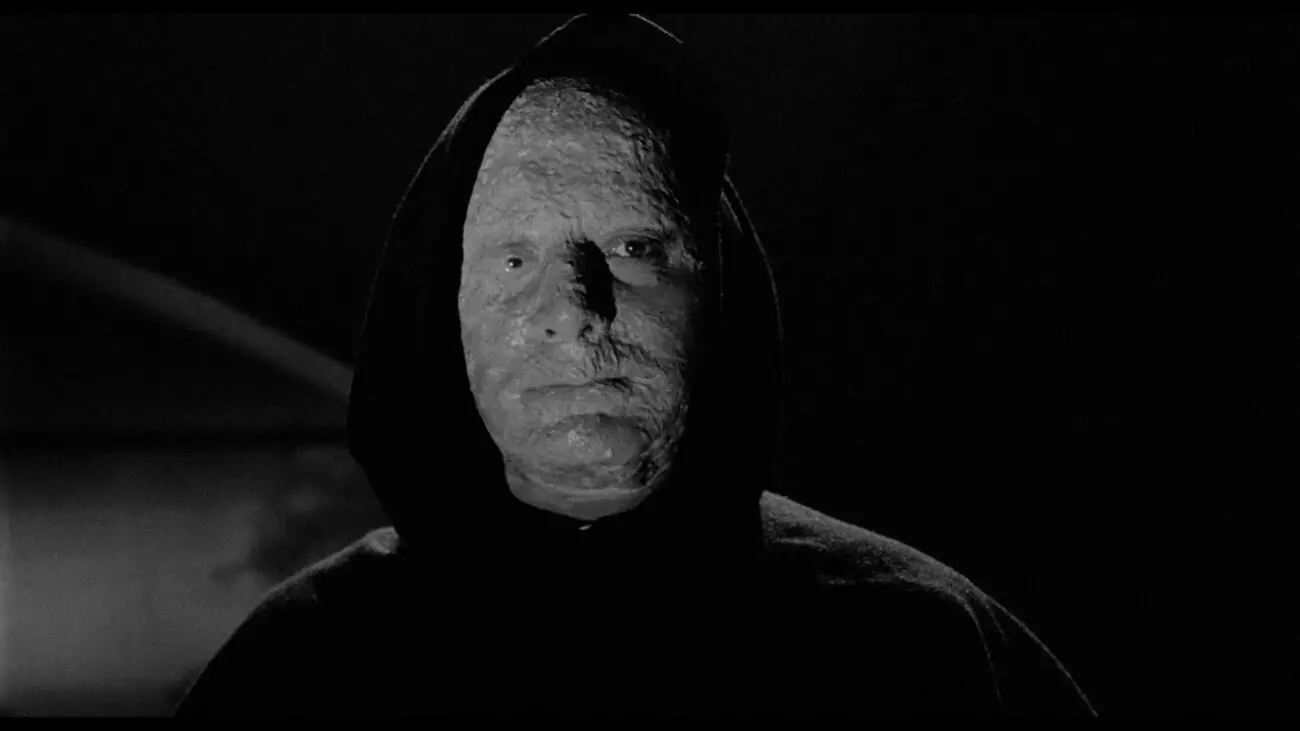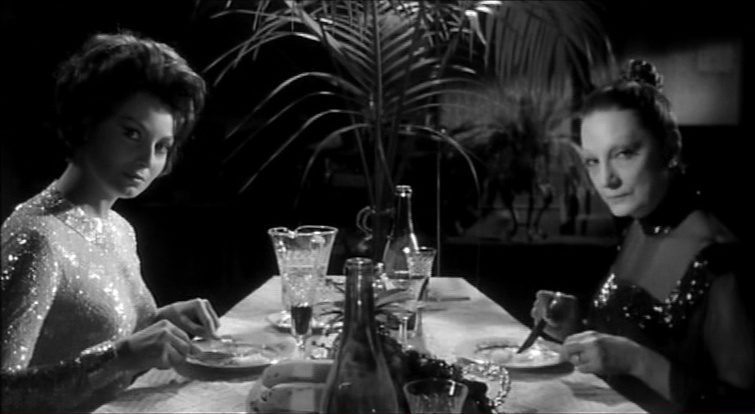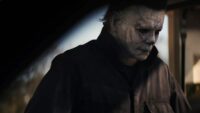Welcome to my column dedicated to the appreciation of physical media supplements called: Feature Presentations. The goal of this column is not to say whether a film is good or bad and worth picking up or not—I would like to highlight the discs that go the extra mile and provide film fans with enough tasty tidbits to satisfy even the hungriest of cinephiles. With all that out of the way, today’s article will focus on the Arrow Video box set: Gothic Fantastico: Four Italian Tales of Terror.

As a disclaimer of transparency, I was provided a review copy of Gothic Fantastico for this episode of Feature Presentations. All thoughts and opinions are my own.
During my younger years, I had more time on my hands, during which I would watch as many films as possible. As with everyone, life gets in the way, so for many years, watching cinematic offerings became less and less as other aspects of my personal life took center stage. If I got to sit and watch a film, that was a bonus instead of a luxury. It is what it is. Now that my life has normalized, I have been working on returning to one of my passions: watching movies.
Films nowadays bore me. Not to knock the latest excursions into some cinematic universe or check out the nth iteration of a literary classic, but I want to branch out and find films that feel different. I want to watch actors on real sets handle scripts of unknown quality in the hopes of seeing something different. Maybe they won’t be good, but the hope is to walk away feeling something other than predictable.
Part of this branching out is moving out of my comfort zone. As a child of the ’80s, I grew up with Ghostbusters, Back to the Future, and the works of Arnold Schwarzenegger. As a teenager and into my 20s, the idea of high-concept films was always at the forefront. A big cinematic extravaganza spoke to my senses. Now that I’m much older, I realize there are many films I left by the wayside that didn’t appeal to my bombastic sensibilities. I’ve been working to rectify this by dipping my toes into other genres and periods of cinema that I avoided until recently. So, this leads me to this today’s episode of Feature Presentations: diving into 1960s Italian horror of the gothic variety.
When Arrow Video announced the Gothic Fantastico: Four Italian Tales of Terror, I was interested but trepidatious. A box set of this caliber is what I wanted to expand my horizon with, but there’s always that doubt that you may not enjoy the offerings. As this column is more dedicated to the supplemental material, I’ll give a brief synopsis of the movies, followed by diving into the extras.
Lady Morgan’s Vengeance

Lady Morgan ends up marrying a local man, Sir Harold Morgan. When Sir Harold and his mistress, Lilian, concoct a plan to murder the film’s heroine, things do not go according to plan. Lady Morgan’s Vengeance plays as one might expect, but the gothic atmosphere and the black-and-white photography create a spooky atmosphere and a welcome sense of dread.
The disc comes with a newly-recorded introduction to the film by Italian film devotee Mark Thompson Ashworth. Ashworth runs down the history of Lady Morgan’s Vengeance, his thoughts on the film’s standing within Italian horror, and honest assessments of the film’s structure and plotting.
“The Grudge” is a new visual essay from author and producer Kat Ellinger. Anyone familiar with Kat Ellinger’s work on any physical media discs understands she is invaluable when discussing film. Ellinger runs through Hammer horror films, opening up the export market and allowing new horror ideas created into the ’50s through the ’60s and into the ’70s. Ellinger packs this essay with wall-to-wall history and is a must-listen for horror fans.
“When We Were Vampires” is a 2021 interview with actress Erika Blanc. Blanc states that she doesn’t recall much about the production, then spends the interview talking about various aspects of Lady Morgan’s Vengeance. She’s a welcome listen as she runs through talking about her first on-screen kiss, the reason behind her stage name, and getting choked out during a climactic scene in the film. I enjoyed listening to Blanc as “When We Were Vampires” is an entertaining and knowledgeable interview.
“Born to be a Villain” is an interview with actor Paul Muller. Muller talks about growing up in Switzerland and wanting to run away to the circus before calling that a disaster. “Born to be a Villain” is a different type of interview. Muller traces his career from his early days in Paris through a touching story involving Bette Davis. I found myself involved with Muller’s comments as he recounts many details about his life and a wonderfully detailed trip through the life of a working actor.
Arrow Video also includes “The Pupillo Tapes,” a 1993 audio-only chat with director Massimo Pupillo conducted by Italian radio host Fabio Melelli. Pupillo runs through the films of his career up to that point, including working with Barbara Steele and Mickey Hargitay, how German Expressionism influenced his work, and honesty on the movies in his filmography. As with the other extras on this disc, Lady Morgan’s Vengeance isn’t the focal point, but there is plenty of given by Pupillo.
A curious inclusion comes with the complete original cineromanzo for Lady Morgan’s Vengeance. Published in Suspense in 1971, this 59-page adaptation breaks down the film into print form.
Arrow Video includes a feature-length audio commentary with film critic and author Alexandra Heller-Nicholas. Nicholas talks about how the film deals with themes of gas-lighting and domestic violence, how the production came to be, and discussions of class and power. Nicholas works well and balances nuggets of behind-the-scenes information with detailed analysis of specifics found beneath the film’s surface.
The disc concludes with a small image gallery and the film’s theatrical trailer.
The Blancheville Monster

The Blancheville Monster tells the tale of Emilie, who returns to her father’s castle to find things have drastically changed. As she works to uncover the reason for these changes, a sinister plot is underway in the hopes of alleviating a curse. The Blancheville Monster spoke to me more than Lady Morgan’s Vengeance—an appropriate gothic mood and an eerie score. It’s not a great horror film, but it works as a low-budget chiller, perfect for the Halloween season.
Mark Thompson Ashworth returns with another newly-recorded introduction. Ashworth talks about how The Blancheville Monster came about to ride on the success of Roger Corman‘s Edgar Allan Poe adaptations and the slight differences between the Italian and English versions.
“Are You Sure That It Just Wasn’t Your Imagination?” is a 2022 essay conducted by writer and pop culture historian Keith Allison. Allison starts by walking through the beginnings of Hammer Films and other films, looking to milk the production company’s formula. Allison then moves into the types of horror that inspire The Blancheville Monster before analyzing the finished product.
“Welcome to the Manor” is a 2022 video interview with author and filmmaker Antonio Tentori. Tentori discusses the influences of Edgar Allan Poe and Riccardo Freda’s works on The Blancheville Monster. Tentori lists examples from each’s works and how they helped shape director Alberto de Martino’s 1963 film. Tentori’s honest comments include understanding the director went on to craft more well-renowned movies later and the film as standard but also appreciating the expertly-constructed script that serves well as an Italian thriller.
Filmmaker and historian Paul Anthony Nelson feature on the disc for The Blancheville Monster‘s audio commentary. As with others on the disc, Nelson touches on how this film came about thanks to Roger Corman’s Poe work, specifically, The Fall of the House of Usher. Nelson spends more time discussing the movie than Nicholas had with Lady Morgan’s Vengeance—while I usually appreciate more film discussions than analysis, I found this commentary a bit dry for my taste.
The disc concludes with alternate opening credits for the film under the title, Horror, along with the film’s theatrical trailer and two promotional images. As a bonus, Arrow Video includes the option to watch the movie in Italian or English.
The Third Eye

When a wealthy man’s wife dies in a car accident, his mental state begins to slip. Changing gears from the prior two films in Gothic Fantastico, The Third Eye keeps the gothic atmosphere while upping the sex and murder quotient. The movie stands out among the others in the box set and is a curious watch, and seeing Franco Nero in one of his earliest roles is a highlight.
Mark Thompson Ashworth returns with another video introduction for The Third Eye. Ashworth discusses the film’s production history, the actors involved, and the controversy with the censorship board over the film’s grim tone and sexuality.
“Nostalgia Becomes Necrophilia” is a 2022 visual essay with author and filmmaker Lindsay Hallam. Hallam does an excellent job at breaking down the psychological aspects of The Third Eye, including analyzing small touches employed by the filmmaker and the influences of Alfred Hitchcock’s Psycho.
“All Eyes on Erika” is an interview with actress Erika Blanc. As with Blanc’s interview on the first disc, she is a hoot! Blanc recalls working with star Franco Nero, goes in-depth on her name changes, and even touches upon the 1979 remake, Beyond the Darkness.
Author and critic Rachael Nisbet contributes a feature-length audio commentary to The Third Eye. Nisbet gives you a slightly more scholarly approach when discussing the film as she dives into the film’s production and themes throughout the runtime. Her calm and measured delivery worked well for me as I ate up the analysis and factoids she dished out. I have to say that this track was my personal favorite within the box set.
Similar to The Blancheville Monster, Arrow Video offers the option of watching The Third Eye in Italian or English version. The last feature on the disc is an image gallery with a small handful of photos.
The Witch

I’ve never been the biggest fan of witchcraft films, and The Witch continues that trend. A man is entranced by two different women while inside a dilapidated house. The Witch is an unusual release within the Gothic Fantastico box set in that it doesn’t look gothic, but there’s a creeping horror that one may not expect during the film’s first few minutes. It’s not how I expected this Arrow Video box set to conclude, but I’m glad it did.
You didn’t think Arrow Video would conclude this box set without a fourth and final introduction from Mark Thompson Ashworth, did you? Ashworth states up front that this film is the most uncomfortable discussing. Thompson breaks down how this film is different, shot near the end of the Italian horror period of the ’60s, and touches upon the actors and director.
“Loving the Devil” is a 2022 visual essay by author and academic Miranda Corcoran. Corcoran goes in-depth about the usage of witches in film and how The Witch subverts expectations. Witchcraft is on tap with “Loving the Devil,” as Corcoran spends much of the essay detailing aspects of the dark arts and how it plays into the representation of women and witches in film.
“The Rome Witch Project” is a newly-filmed interview with author and filmmaker Antonio Tentori. Similar to the earlier extra featuring Tentori, “The Rome Witch Project” is a measured and well-informed discussion about The Witch. Tentori discusses the actors in the film, the history of witches and how that pertains to The Witch, and the unusual design of the film’s house set.
Kat Ellinger returns to close out the Gothic Fantastico box set with a feature-length audio commentary for The Witch. Immediately, you can feel Ellinger’s enthusiasm for The Witch not following a typical gothic formula. Ellinger discusses how the film throws the audience off-base with an opening that plays similar to La Dolce Vita, the themes of witches and sexuality, and discusses the difference between the film and the novel. Ellinger, as expected, does an expert job filling the commentary with pinpoint analysis and entertaining nuggets of information.
There’s one final piece of information that I need to discuss before I close this out. The screener copies I’m using came with the discs only. The Gothic Fantastico box set collection comes in a cardboard box that holds the four discs. The limited edition packaging features an 80-page booklet, a double-sided poster, and each disc comes with newly-designed reversible artwork.
And there you have it! Wow, what a box set! Arrow Video crafts an exhaustive and entertaining box set shining a spotlight on a specific period in film history. For someone like myself, whose knowledge of Italian gothic horror of the 1960s is limited at best, this proved to be an entertaining crash course in film history. If you’re a fan of Italian horror or looking to branch out as I did, the Gothic Fantastico: Four Italian Tales of Terror is a fine place to start.



